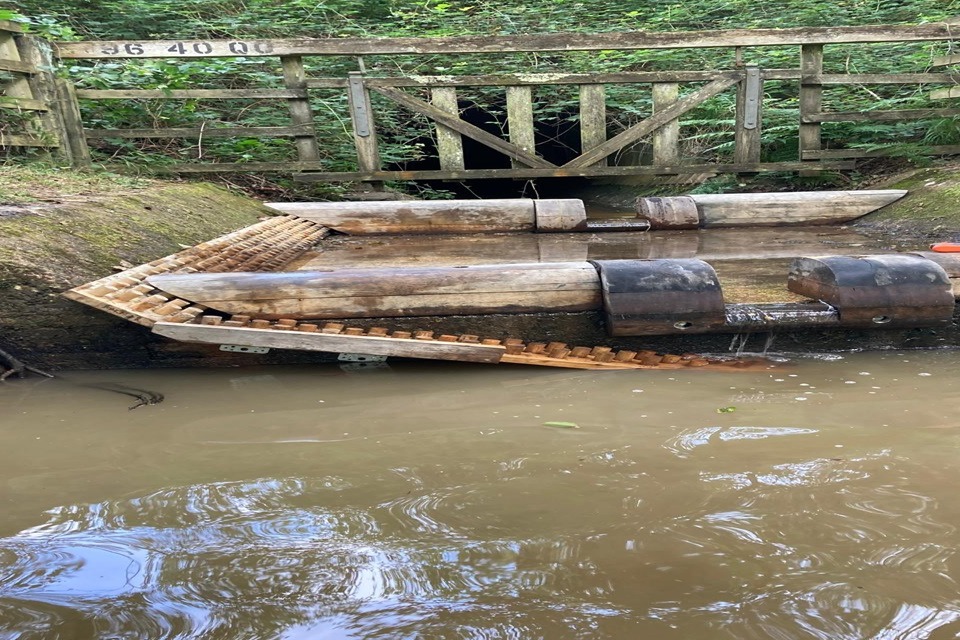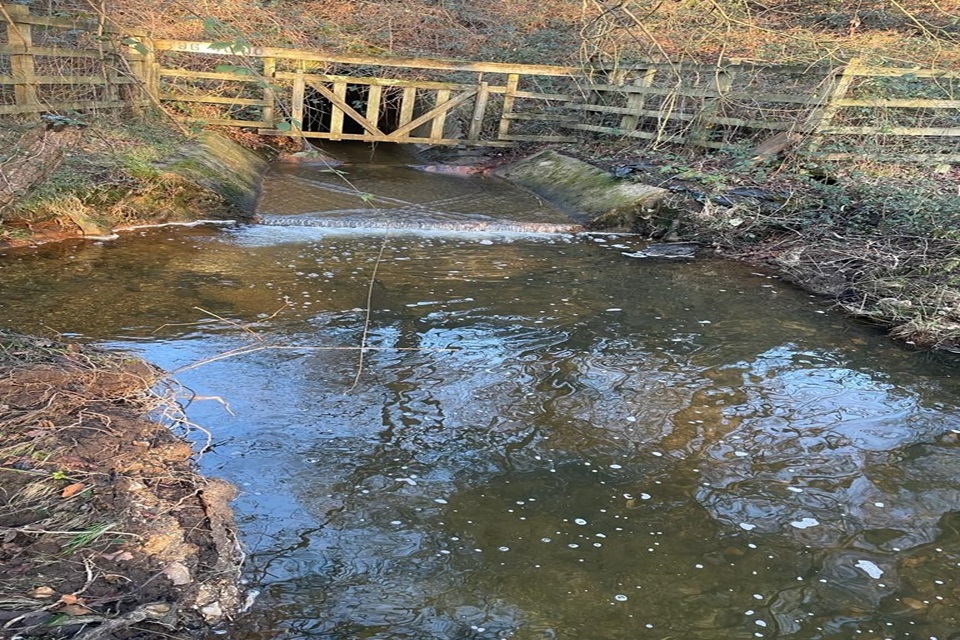Environment Agency opens up more fish habitats in New Forest
Sea trout and eels can now access more habitats in the New Forest after Environment Agency fits fish pass made from natural materials

The new fish pass will help sea trout and eels move upstream.
The Environment Agency has improved access for sea trout and eels in the upper reaches of the New Forest’s Highland Water ecosystem.
A bespoke structure has been built to create more favourable conditions for fish to migrate upstream over a wider range of water levels and flows. The fish can now access over 2km of habitat under a greater range of flows.
The multi-species fish pass was constructed where the stream passes under the A31 through a culvert onto a weir, which previously made migration more challenging.

The new fish pass will greet eels who have travelled 4,000 miles from the north-west Atlantic Ocean.
Vicky Gravestock, a fisheries officer with the Environment Agency, said:
The barrage structures, used to ease migration, have been designed to help both sea trout and eels move upstream over a wider flow range, increasing successful migration. We hope we have played our small part in the lifecycle of these fish by making more habitat available to continue their journey.
We had to meet strict standards to deliver these works in the New Forest because it is a protected site. During construction, we used natural materials, which were in keeping with and sympathetic to their surroundings. We were able to use the in-house skills of our wood workshop in Rye, in East Sussex, and then apply the skills of our field team to tailor and fit the structures on site.
The success of the project will continue to be assessed as part of the Environment Agency’s fish-monitoring programme in Hampshire, Sussex and on the Isle of Wight, next summer. At the end of this year, the sea trout redds, which are nests created to lay their eggs, will also be counted.
Sea trout are known to spawn throughout the New Forest. The fish enter the river system from the Solent, in late spring making the journey upstream to spawn in December. Some of them migrate out to sea as smolts, or young trout, live their adult lives at sea and then return to freshwater to spawn again.
Eels spawn in the Sargasso Sea in the north-west Atlantic Ocean. From there, they journey 4,000 miles over two years to Europe. Once they reach freshwater estuaries, they turn into young eels, known as elvers, up to 12cm long and swim up into rivers. Here they can live for up to 20 years, before returning to the Sargasso Sea as mature adults to spawn.

How it was before the fish pass went in. Conditions were less favourable for migration.
Background:
- The New Forest fish pass cost £19,400, including an options appraisal report, detailed design, fabrication, and installation.
- The fish pass structures are known as pre-barrages.
- A gov.uk blog about eel migration: Ancient mystery of European eel migration unravelled to help combat decline of critically-endangered species - GOV.UK
- Anyone aged 13 or over needs a licence to fish for salmon, trout, eels or freshwater species, with the price as little as £6.60 for a day. Through buying a licence, anglers help protect and improve fish stocks and fisheries: Buy a rod fishing licence: Buy a rod fishing licence for England and Wales - GOV.UK
Contact us:
Journalists only: 0800 141 2743 or communications_se@environment-agency.gov.uk